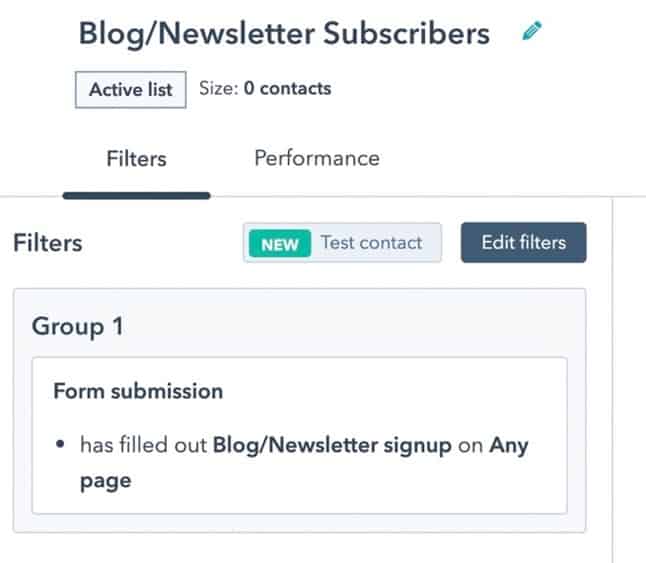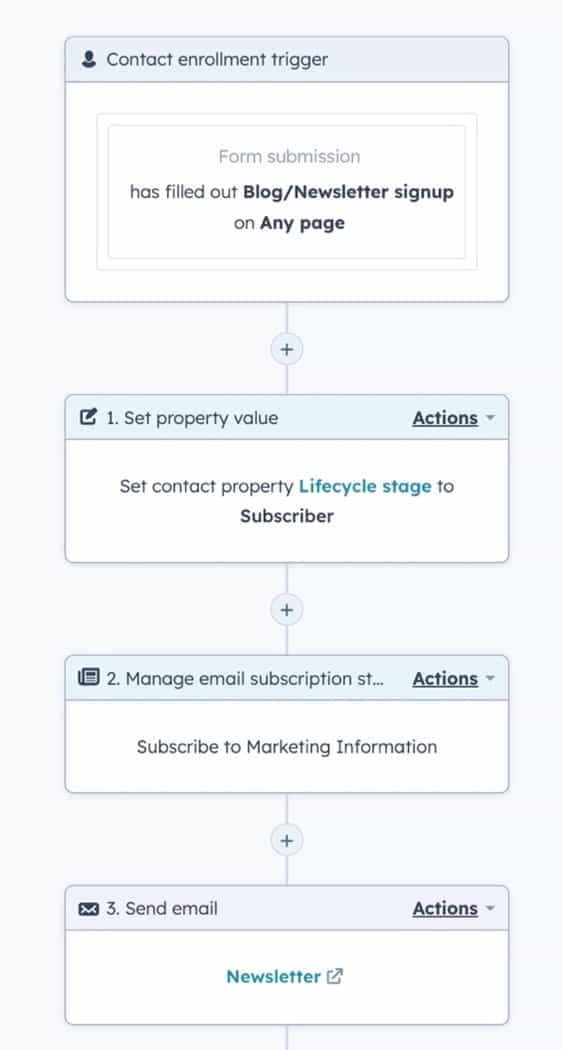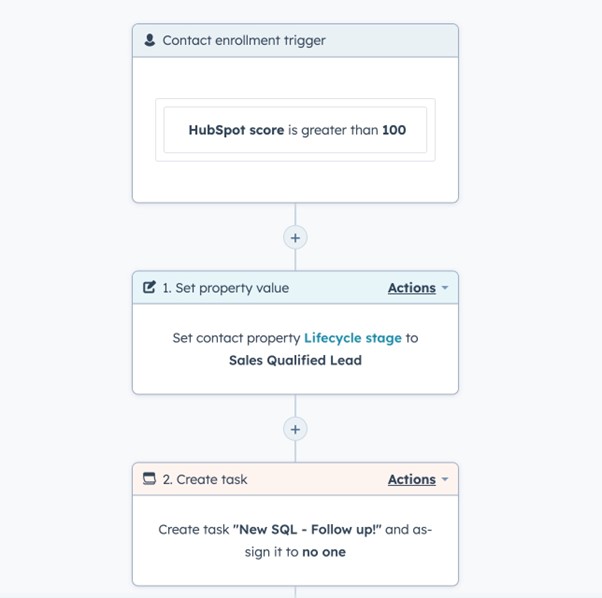
Simply put, marketing automation is the process of using software to automate marketing tasks.
Marketing automation can be as simple or as complex as you need it to be. Whether your goal is simply to send a ‘welcome’ email to new subscribers or as complex as a behavioural activated drip-campaign of emails to nurture a new lead through to a Sales Qualified Lead (SQL), utilising marketing automation will help. If that sentence has struck fear into your bones, hold on tight! (Sidenote: It’s easier than it sounds!)
How does marketing automation work?
Let’s take HubSpot, for example – in my opinion, the ultimate Marketing Automation tool out there. It’s a colourful and user-friendly piece of software with endless possibilities. But HOW does this tool make my life easier I hear you ask?
Let’s say Sally Subscriber has found your website, read your blogs and decided to give you her email address so you can deliver more content to her via your monthly newsletters. You don’t want to let Sally down and have her miss out on your incredible content but, without automation, the task of keeping Sally up to date is extremely manual, labour-intensive and has possibilities for error; think about it, we’ve all sent a ‘please find attached’ email with the attachment nowhere to be seen, haven’t we? Marketing automation is your best friend for tasks like this.

(Image: A funny comic about forgetting to attach your files to an email)
We can use automation tools such as segmentation to add Sally Subscriber to a ‘Newsletter subscriber’ list (see the automation screenshot 1 below). This requires using filters within HubSpot to segment the right people into the right lists’ dependant on their behavioural actions and the data we hold on their contact record. Data, behavioural actions, segmentation – who doesn’t love a buzzword?

Next, we then send the newsletter straight to her inbox when it’s ready (automation screenshot 2 below)

The best way to use marketing automation is not just to automate mundane or repetitive tasks, but to use the data and insights you have about your contact’s profile, needs, interests and behavioural actions to also help these tasks perform better, be more engaging and provide an overall better experience for your contacts. A win – win situation for everyone!
What are the benefits of marketing automation?
80% of the world’s top-performing companies that have been using marketing automation technology for the past three or more years have seen a notable boost in revenue as well as consumer engagement (Source).
So, besides saving time and resource, the benefits of marketing automation are huge and can directly affect your revenue. Using a finely tuned marketing automation process can really help your business succeed, whatever your end goal may be.
Looking for more people to attend a webinar? An automated workflow of emails sent over a period of several weeks before the event date will help engage your target audience and encourage them to attend. Don’t forget a reminder email the day before / morning of the event too! All automated, personalised, engaging and targeted.
Looking to convert leads into customers? Or upsell to your existing customers? Automation can help with all of this.
How do the best marketers use marketing automation to help generate sales?
We’ve covered using segmentation of your data and email marketing automations, but as I mentioned at the start of this blog, we can do much more complex activities with automation and really reap the rewards.
Let’s look at how we could turn an unsuspecting ‘LinkedIn Lurker’, (we’ll name him Luke for the sake of this exercise) into a customer.
This process is called ‘lead nurturing’ and without marketing automation, it’s practically impossible.
Luke is enjoying his 10am cup of coffee and a LinkedIn scroll when he sees a LinkedIn advert promoting just the e-book he’s been looking for: ‘101 reasons why Cremarc are the best B2B marketing agency in the world’ for example.
Luke clicks on the advert, enters his email address in exchange for our e-book, downloads the e-book, enjoys his coffee whilst reading some killer content and goes about his day.
“This is your big moment marketing automation, show them how you shine…!”
Luke’s details fall into HubSpot as a lead – via a simple Ads connection. We can see he’s interested in our content, filter him into a list (as we did with Sally earlier) and then continue to send Luke other content that may be relevant to him – depending entirely on the original content he downloaded. This is a behavioural-led drip campaign – see, it’s not as tricky as it sounds!
Over a period of weeks, we’ll contact Luke and use his behaviours to give him a score such as:
- Opening emails (+5 lead score points)
- Clicking links within emails (+10 lead score points)
- Downloading more content (+30 lead score points)
- Viewing case studies etc (+70 lead score points)
This will give Luke a ‘lead score’ (or Hubspot score if that is your chosen software) and this lead score is what our marketing and sales team will use to help turn Luke into a customer.
We can use automation to award positive (+) and negative (-) scores to our contacts and use the lead score of each contact to ensure that we are targeting the right people at the right time.

If Luke goes on to open our emails, click through to more blogs, download more e-books or read our case studies, his score will increase. This lets us know he’s potentially interested in our services and we can alert or sales teams towards this new Sales Qualified Lead and hopefully invite Luke in for a coffee and chat about how we really are the best B2B marketing agency in the world!
(P.S. you can learn more about lead scoring in our Marketing Trends e-book)
Key marketing automation statistics
(Source: These statistics have all been sourced from this blog about marketing automation statistics)
- 84% of surveyed marketers have successfully used marketing automation to achieve their top priorities. (Ascend2)
- Almost four-fifths (72%) of the most successful companies utilise marketing automation (HubSpot)
- Marketing automation is the number one most effective digital marketing technique after content marketing, according to global marketing professionals. (Statista1)
- Email is the most frequently used automated marketing channel. 65% of marketers leverage email automation. (Ascend2)
- The largest benefits of marketing automation are saving time on repetitive tasks and facilitating personalised customer communications, according to 49% of companies. (Pendalix)
- HubSpot is the most popular marketing automation software provider, with over 29% market share. (Statista4)
So, that’s the basics of marketing automation. If you’d like to learn how we can help your business utilise marketing automation, find out more about the work we do! Or, fancy a chat in more detail? Get in touch with us!